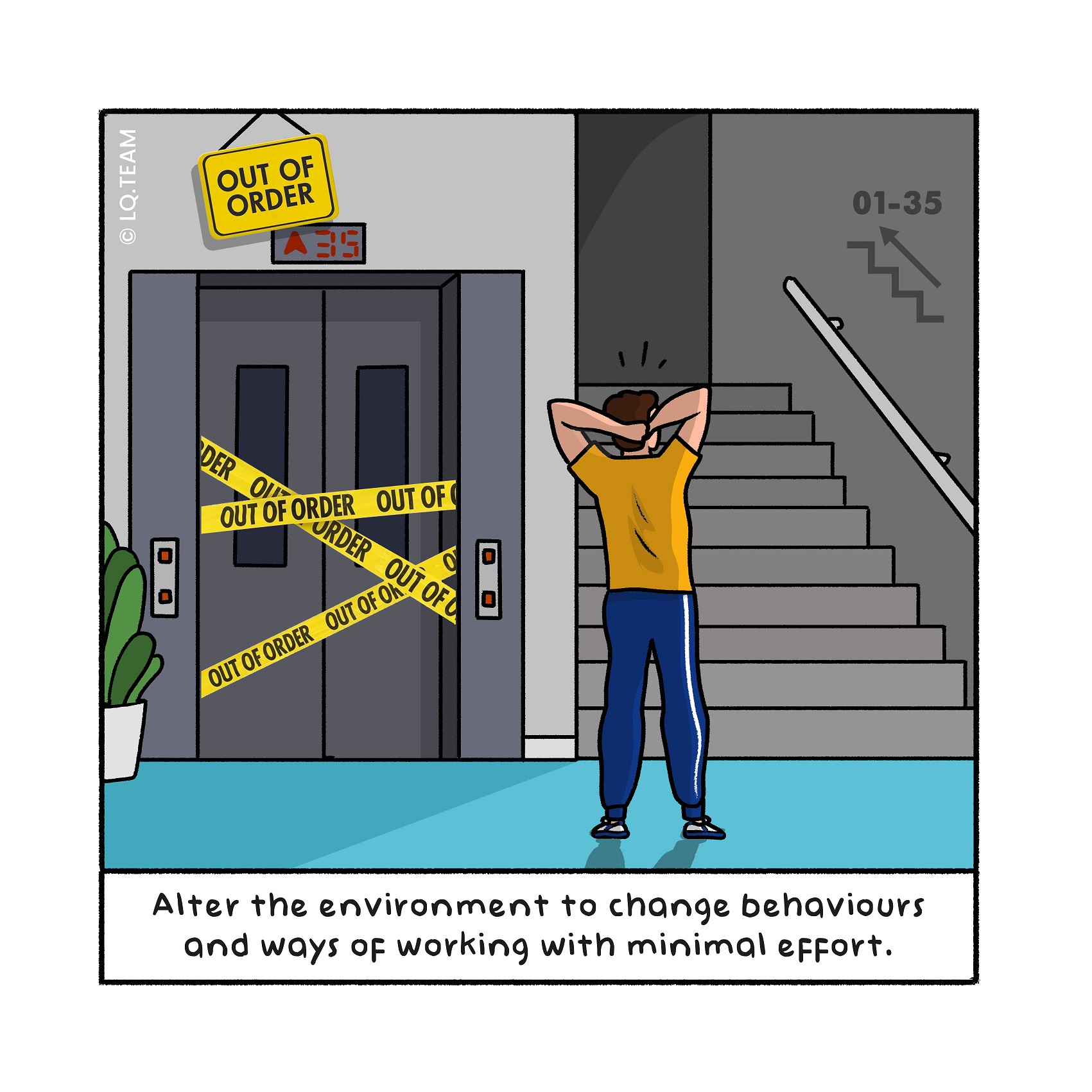
Nut to crack: How do you structurally change the ways of working with minimal effort?
Changing routinised ways of working can feel rigid and sluggish. After the umpteenth conversation about process improvements without significantly perceivable change, you may be fed up. The question then arises: could it not be done easier, with less effort? In other words, how can you change the ways of working with minimal effort?
Nutcracker: Work on the context
Think of a supermarket where our actions are continuously influenced without anyone talking to us. The way the shelf is laid out, what you can smell, and all kinds of contextual factors are intended to control our actions. There is something to be learned there.
The government does the same. A good example is average speed camer- as. You get different driving behaviour by performing average speed checks instead of placing a speed camera. Drivers do not brake and accelerate, but continuously drive the required speed. A simple intervention gives an entirely different effect.
This type of intervention is called a “nudge”; a minor adjustment in a pro- cess, with a disproportionately large impact on our behaviour. These nudges change actions by making the alternative easier or more attractive. In every- day life, this could be placing a bowl of fruit in a central place in the kitchen if you want to eat healthier, or placing high-margin products close to the check- out in a supermarket to increase sales.
The following practical example of an internet organisation clarifies how you can improve productivity in the business context with a nudge; a slight change in the process, and just two emails.
Real-life example: Implement nudging
An internet organisation is struggling with the low productivity of new technical em ployees. The question is how to shorten the period from an employee’s onboarding to performing at a professional level. It currently takes nine months for a new employee to fully perform at the desired level.
Instead of launching all kinds of largescale campaigns, a data worker on behalf of the technical manager analyses the distinguishing factors of new employees who reach the professional level quickly compared to their peers. What do they do more often or differently than their colleagues? A list of five points follows from this analysis.
The manager then sets up a standard procedure in which every new employee receives an email at the start of the employment contract. The email welcomes the employee and explains what factors have contributed to current employees’ success in the early days. A similar email goes out to the new employee’s manager with tips about what they can do to increase the employee’s chance of success in the onboarding period.
The effect of this simple process intervention – one email to a new employee and one email to their line manager – ultimately reduced the time to full productivity of technical employees from nine to six months.
Tip for change leader
When managing change, especially when it comes to large change processes such as an integration after a merger, a reorganisation or a digital transformation, you can easily fall into the trap of thinking you need to implement significant and farreaching change interventions. Thinking in terms of “nudges” provides a nice counterbalance to this be cause it forces you to think about how you can achieve a disproportionately large effect on people’s actions with only a tiny change in a process.
Tip for change enabler
Challenge change leaders to think in “nudges”. Where do you need average speed cameras instead of speed cameras to let employees choose the appropriate action?
Kernel: Minimal effort, maximal effect
Behavioural change can be achieved through small interventions in an indi- vidual’s process. Some small interventions provide a tipping point response; if the person first did a, they now do b, simply because that choice has become more attractive or accessible. This type of intervention is worthwhile because a disproportionately large effect can be achieved with minimal resources and disruption.
